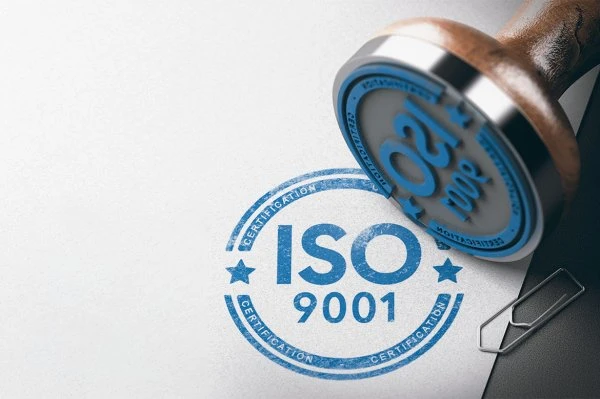ISO 9001 Certification: An Overview
ISO 9001 sets out the criteria for a quality management system (QMS) and is the only standard in the ISO 9000 family that is certifiable. While certification is not mandatory, it serves as a globally recognized benchmark for quality. This standard is versatile and can be applied by any organization, regardless of size or industry. Over one million companies and organizations in more than 170 countries have achieved ISO 9001 certification, underscoring its widespread adoption and significance.
Core Principles of ISO 9001
ISO 9001 is founded on several fundamental quality management principles:
- Customer Focus: Ensuring that customer needs and expectations are met, leading to increased customer satisfaction and loyalty.
- Leadership: The involvement of top management is crucial for the effective implementation and maintenance of the QMS.
- Engagement of People: Empowering employees and encouraging their involvement in quality management processes.
- Process Approach: Enhancing efficiency and effectiveness through systematic process management.
- Improvement: Driving organizations towards continuous performance enhancement.
- Evidence-Based Decision Making: Basing decisions on the analysis of data and information.
- Relationship Management: Managing relationships with interested parties to optimize performance.
These principles are detailed in ISO’s quality management principles documentation, providing a comprehensive framework for achieving high standards of quality.
Benefits of Implementing ISO 9001
Implementing ISO 9001 offers numerous advantages for a packaging company:
- Enhanced Customer Satisfaction: By consistently delivering high-quality products and services, organizations can boost customer satisfaction and trust, crucial for business success.
- Improved Operational Efficiency: The process-oriented approach helps in streamlining operations, reducing waste, and minimizing errors.
- Regulatory Compliance: Adhering to ISO 9001 helps ensure compliance with relevant regulations and standards, reducing the risk of non-compliance penalties.
- Culture of Continuous Improvement: The standard fosters a culture where continuous improvement is ingrained in the company’s operations, driving long-term growth and competitiveness.
- Market Differentiation: ISO 9001 certification can serve as a marketing tool, distinguishing the company from competitors and enhancing its reputation in the market.
- Better Risk Management: Systematic processes and procedures help in identifying and mitigating risks effectively.
Achieving ISO 9001 Certification
For a packaging company, achieving ISO 9001 certification involves several steps:
- Gap Analysis: Assessing current processes against ISO 9001 requirements to identify gaps.
- Planning: Developing a detailed plan to address identified gaps and align processes with ISO 9001 standards.
- Implementation: Executing the plan and embedding quality management principles into the company’s operations.
- Training: Educating employees about ISO 9001 principles and their roles in the QMS.
- Internal Audits: Conducting internal audits to ensure processes meet ISO 9001 standards and identifying areas for improvement.
- Certification Audit: Undergoing an external audit by a certified body to verify compliance with ISO 9001 requirements.
Achieving ISO 9001 certification is a strategic decision for any packaging company aiming to enhance its quality management system. This certification not only assures high-quality products and services but also contributes to operational efficiency, regulatory compliance, and long-term business growth. By adhering to the core principles of ISO 9001, packaging companies can ensure sustained excellence and a competitive edge in the market.

